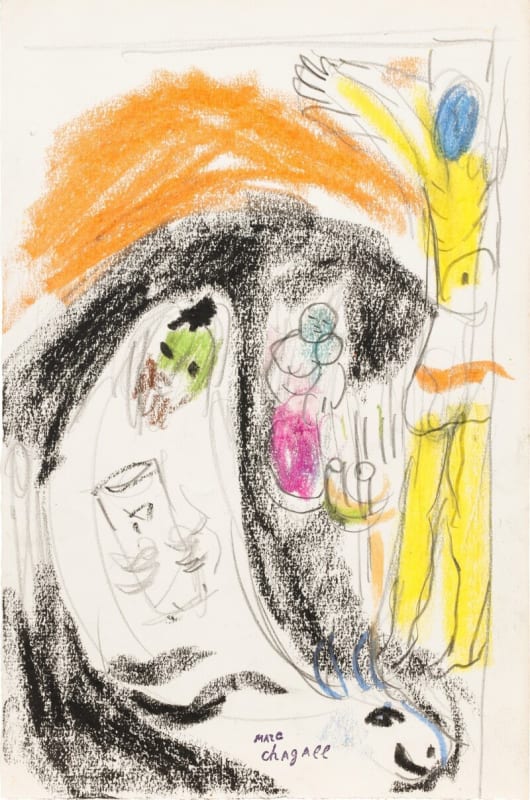Framed size: 54.6 x 45cm
The Resurrection is a crucial image within Chagall's oeuvre. For all its luminous colour and lyrical composition, it's a tough, muscular image that reminds us of the steely core at the heart of Chagall's work.
The subject first appears prominently in the 1912 painting "Calvary". As the shadow of war spread across Europe in the late 1930s, Chagall returned to the subject again and again. He fled to the United States in 1941, an exile that would last for six years. This drawing was made shortly after his return and relates closely to a triptych that is held by the Musee Chagall in Nice, painted between 1937 and 1952.
"Resurrection" is the central panel in this triptych, coming after "Resistance" (an image of the Crucifixion) and it can be said to represent the transformation of hate into love. The hatred that led to the execution of Christ gives way here to a sense of calm and tranquillity. The colours brighten, a mother and child cling to each other in the background, a holy man stands peacefully with his Torah, and a smiling beast sits at the base of the Cross.
We can read Chagall's imagery as a direct reference to the suffering of the Jews during the Holocaust, and their resurrection as the shadow began to lift. His appropriation of Christian iconography as a metaphor for the experience of the 20th century Jewish community is highly personal and relates also to his own experience of being a wandering exile who struggled to find a place in the world.
This is Chagall at his most powerful.
This authenticity of this piece has been confirmed by the Chagall Committee. The work can also be checked against the archives.
Any questions? We are happy to help. Call: 0117 279 6402 or send us a message now.


